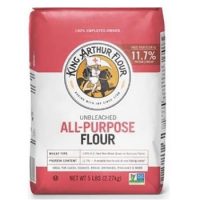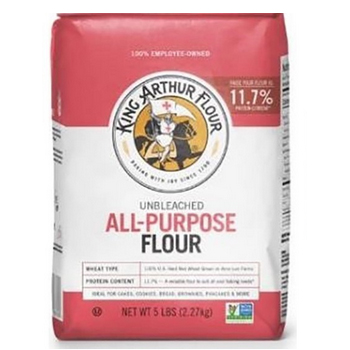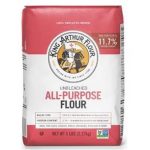Although no two food processing facilities face the exact same pest pressure, there are a few common pests you’re likely to spot. Depending on the type of pests in the surrounding area, different spaces in a building will be more at-risk for an infestation. Pests will feed on and contaminate product, and get into equipment, if undeterred. And considering many pests can be a potential health and safety threat, prevention is important to help protect your bottom line.
Instead of reacting to pest issues, adjust your integrated pest management (IPM) program to take a proactive approach to preventing the following six common pests.
Rodents
Some of the most clever and resilient creatures in the pest world, rodents are a versatile threat to food products. Usually brown or gray, mice and rats can compress their bodies to fit through holes and gaps the size of a dime and a quarter, respectively. Once inside, they reproduce rapidly. A single rat or mouse can produce more than 32 offspring per year. In addition, they can use their sharp teeth to gnaw through packaging and leave urine and feces droppings everywhere they go. All of this makes them an absolute terror once indoors. They’re smart enough to know hiding from humans is their best option, and they’ll even learn from unsuccessful trapping attempts.
Cockroaches
These notorious crawling insects are contaminators, too. Roaches love to get into dirty areas and run all over food contact surfaces, equipment and products, potentially dropping off disease-inducing pathogens on everything they touch. Cockroaches can fit through tiny gaps by flattening their bodies, making them tough (but not impossible!) to keep out. They tend to avoid coming out in the open during daytime hours, as they prefer to hide in the dark. If you spot one running around during the day, then it may be a sign of a larger infestation behind the scenes.
Flies
When flies detect a potential food source, they’re going to head straight for it. Stringent sanitation is the best way to minimize attractants, and keeping doors and other openings closed can help, too. Preventing flies is important, because they’re twice as filthy as cockroaches. In fact, more than 100 pathogens are associated with the housefly alone. These pathogens are transferred when the fly lands on a surface, contaminating the area. If flies are a threat, you should have fly lights placed strategically to reduce the population and monitor where they’re coming from.
Indian Meal Moths
This tiny insect feeds on a wide range of raw and finished goods, and leaves behind frass (insect droppings) that that can lead to major loss of products. If you don’t see the pest itself, which can be reddish-brown and silver-grey in color, you may notice the silk webbing spun by larvae. When someone notices this, immediate action is necessary, as it means the moths are reproducing and may be spreading amongst products in close proximity.
Sawtoothed Grain Beetle
Unable to penetrate most packaging, sawtoothed grain beetles hunt for holes in packaging, which can be one millimeter in diameter, and lay eggs near the opening. Larvae then squeeze through the hole once hatched and begin feeding on product! Although they prefer processed food products like bran, chocolate and oatmeal, they’ll feed on just about anything they can get into. About three millimeters in length, these beetles love moldy, damp conditions, so minimize those attractants as much as possible.
Ants
Everybody has seen or been around ants before, but are you aware that they carry bacteria on their bodies capable of contaminating food? What starts with a few foragers can escalate quickly, as ants leave behind an invisible chemical trail leading other ants straight to a food source. Ants will feed on just about anything depending on the species, so identification is key. Generally only a few millimeters in length and ranging in color from black to red, ants can establish colonies under a building’s foundation, on lawns or in out-of-sight locations indoors.
Watch Out for High-Risk Areas
Understanding the biology of pests helps us to understand what they’re looking for and where they’re most likely to be hiding. Generally speaking, pests are attracted to places able to provide them with the three things they need to survive: Food, water and shelter.
Food doesn’t necessarily mean actual food products of course, as some pests—like cockroaches, flies and ants—will feed on any organic matter they can find. Remember, that includes garbage!
But taking out the trash and ensuring dumpsters are far away from the building aren’t the only ways to reduce pests. Quite the contrary, pests have a myriad of different hiding spots that should be checked by facility staff and a pest management professional regularly.
For starters, don’t overlook the break room. It’s easy to forget to take out the trash, which should be done at least daily depending on waste output. Break rooms also frequently have sinks with drains where food buildup can cause odors that are attractive to pests. Drain flies love this! Wipe down countertops and sweep/vacuum/mop daily to ensure larger food crumbs and debris are taken care of, and make sure your staff knows to clean up any spills immediately. Don’t forget those vending machines—when was the last time they were moved and cleaned underneath and behind?
Equipment can be a hot spot for pests, too. Insects, especially stored product pests, will hide beneath and behind heavy machinery. Pests don’t want to be exposed out in the open, so they’ll hide in small gaps and crevices. And if there is food waste or moisture present, watch out! Those attractants will prove irresistible if allowed to linger for too long, so make sure your cleaning schedule includes sanitation in and around equipment. Never overlook those hard-to-reach areas, or pests will make you pay.
Speaking of hard-to-reach areas, walls are often popular harborage areas for pests. Rodents are perhaps the most dangerous, as they pose a health and safety threat to employees and can contaminate product. Worse still, wiring in walls looks like roots to rodents. They’ll often chew through and create sparks—a potential fire hazard. Rodents are just one of many pests happy to live in your walls, so contact a professional if you notice activity.
Even once food is produced, packaged and stored, pests are still a threat! Stored product pests, like the Indian meal moth and sawtoothed grain beetle, can get into packaged products and live in it. They’ll feed and contaminate the product, then move onto the next, proving costly when large batches have to be thrown out. Thankfully, there are monitoring devices like pheromone traps to help identify where these begin to pop up, but again, you’ll want a professional’s help to ensure these tools are effective.
Don’t wait for pest sightings to occur before taking action. The best approach to pest prevention is a proactive one, and there’s not an insect or animal alive who can outsmart a trained pest management professional. Lingering issues will prove costly with time, as a product infestation or plant shutdown would be a painful hit on your business’s bottom line. Instead, create a plan that accounts for these pests and high-risk areas around your building, and you’ll be able to rest easier knowing you’re prepared for pest invaders.






















